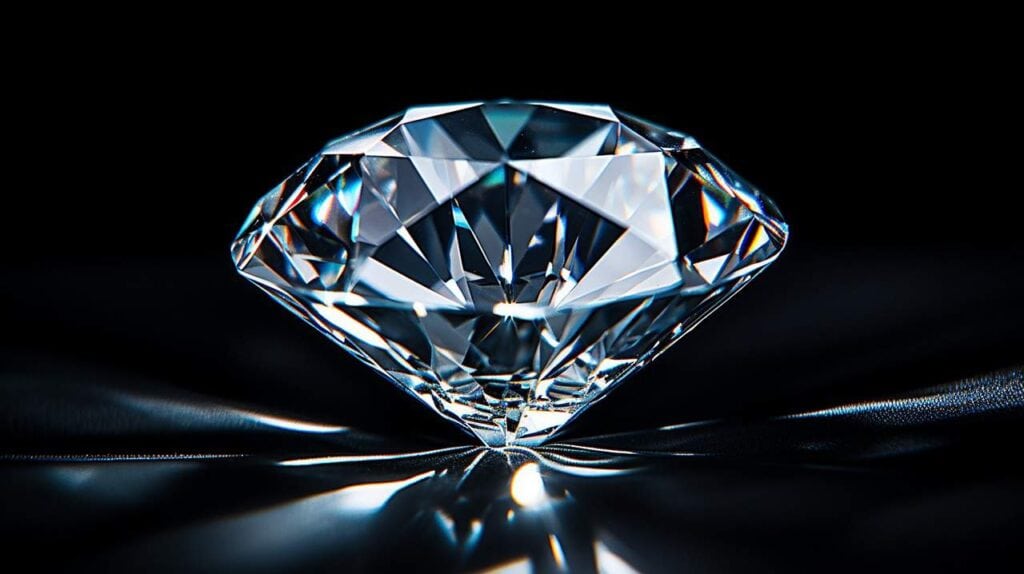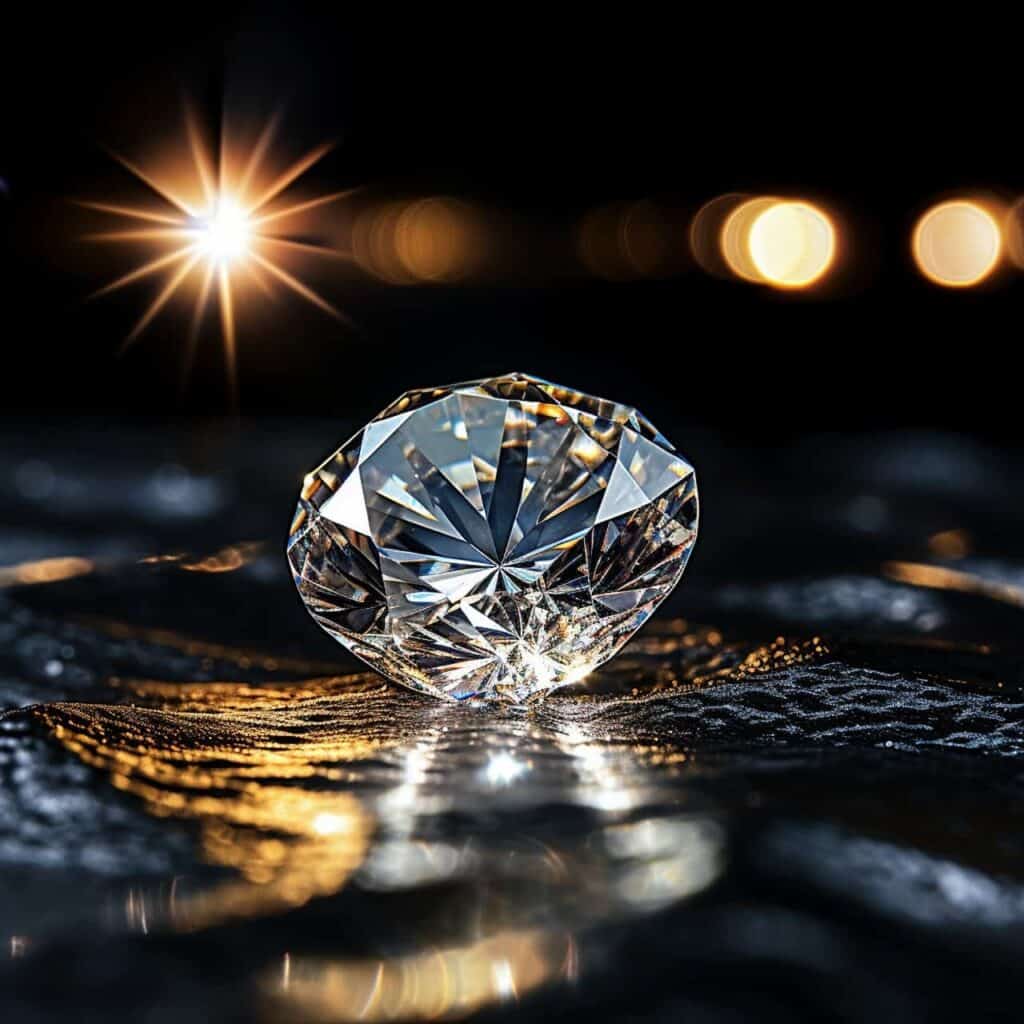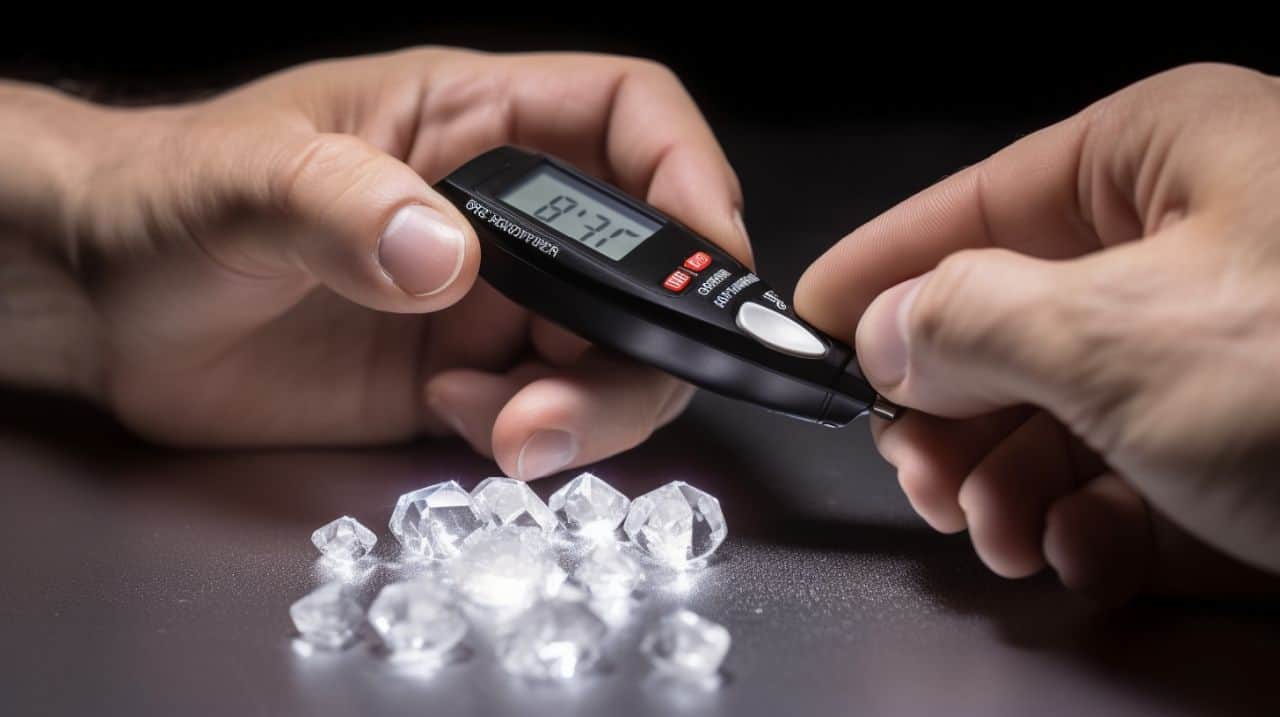As a gem enthusiast, I’ve always been intrigued by the allure of diamonds and the science behind them. Now, with lab-grown diamonds entering the scene, there’s an exciting new frontier to explore.
Can these man-made marvels pass the scrutiny of a diamond tester? Let’s delve into the fascinating world of lab-grown diamonds, investigate how diamond testers work, and unravel this sparkling mystery together.
Key Takeaways
Lab-grown diamonds possess the same physical, chemical, and optical properties as mined diamonds.
Diamond testers can identify both lab-grown and natural diamonds based on their electrical properties.
Diamond testers can easily identify simulants based on their thermal and electrical properties, which differ from real diamonds.
The latest models of diamond testers can detect subtle differences in thermal conductivity, allowing them to separate lab-grown diamonds from natural ones.
Table of Contents
Understanding Lab-Grown Diamonds

In understanding lab-grown diamonds, it’s crucial to note that they’re identical to natural diamonds in almost every aspect. These diamonds are created in laboratories by a supplier of lab-grown diamonds, under high-pressure, high-temperature conditions mimicking the natural diamond formation process. They possess the same physical, chemical, and optical properties as mined diamonds.
Consequently, a diamond tester, designed to identify real diamonds by measuring their heat conductivity, can’t distinguish between the two. Furthermore, the Gemological Institute of America, a well-respected authority in gemology, extends its certification to lab-grown diamonds, reinforcing their authenticity and value.
This new diamond era not only offers an ethical, sustainable alternative but also a sense of belonging for those who yearn for a guilt-free sparkle.
Diamond Testers and Their Functionality
Let’s dive into the functionality of a diamond tester, an essential tool in the gemology world. This technology, specifically designed to differentiate real diamonds from fakes, measures the electrical resistivity and conductivity of a diamond. Lab-grown diamonds, like natural ones, also have unique electrical properties.
Here’s a simple breakdown:
| Property | Natural Diamond | Lab-Grown Diamond |
|---|---|---|
| Electrical Resistivity | High | High |
| Electrical Conductivity | Low | Low |
| Pass Diamond Tester | Yes | Yes |
Differentiating Real Diamonds From Simulants
Moving on from understanding how diamond testers work, I’m now going to delve into how we can differentiate real diamonds from simulants. Here are a few key points to remember:
- Lab-grown diamonds and real diamonds:
- Both have identical physical and chemical properties.
- Diamond testers can’t differentiate them due to their similar thermal and electrical conductivity.
- Simulants and real diamonds:
- Simulants are different in physical and chemical properties from real diamonds.
- Diamond testers can easily identify simulants due to their different thermal and electrical properties.
In the end, differentiating between real diamonds, lab-grown diamonds, and simulants can be tricky. But with a keen eye, the right tools, and a bit of knowledge, it can certainly be done.
Identifying Lab-Grown Diamonds With Testers
So, you might be wondering if a diamond tester can really identify a lab-grown diamond. Here’s the thing – it can, but it’s not as straightforward as you might think.
Diamond testers typically measure thermal conductivity to identify a diamond. Both natural and lab-grown diamonds exhibit high thermal conductivity, which can be misleading.
However, the latest models of diamond testers are designed to separate lab-grown diamonds from natural ones. They can detect subtle differences in their thermal conductivity caused by the unique formation process in the laboratory.
The Affordability of Lab-Grown Diamonds

Having considered the ability of diamond testers to identify lab-grown diamonds, I’m now turning my attention to their affordability, which is one of their most attractive features.
As a consumer, you may be wondering about the price difference between lab-grown and mined diamonds. Here’s what you need to know:
Lab-grown diamonds are approximately 20-40% less expensive than mined diamonds. This affordability is due to:
- Lower production costs: It’s cheaper to grow a diamond in a lab than to mine it.
- Lower environmental impact: Lab-grown diamonds have a smaller carbon footprint, making them a more sustainable choice in jewelry.
This price difference doesn’t compromise the quality or beauty of the diamonds. Lab-grown diamonds can pass a diamond tester and offer excellent value for money.
Frequently Asked Questions
How Is the Process of Creating Lab-Grown Diamonds Impacting the Traditional Diamond Mining Industry?
The creation of lab-grown diamonds is shaking up the traditional mining industry. It’s offering a sustainable, ethically sourced alternative that’s appealing to consumers, thus challenging the demand for mined diamonds.
What Environmental Implications Are Associated With the Production of Lab-Grown Diamonds?
Yes, lab-grown diamonds will pass a diamond tester. They’re identical to mined diamonds in their physical, chemical, and optical properties. So, a tester can’t distinguish between a lab-grown and a natural diamond.
Are Lab-Grown Diamonds as Durable and Long-Lasting as Natural Diamonds?
Absolutely, lab-grown diamonds are just as durable and long-lasting as natural ones. They’re both rated a 10 on the Mohs hardness scale, meaning they’re extremely resistant to scratching and wear and tear.
Can Lab-Grown Diamonds Be Insured the Same Way as Natural Diamonds?
Yes, I can insure my lab-grown diamond just like a natural one. Insurance companies don’t differentiate between the two; they’re interested in the carat size, cut, clarity, and color of the diamond.
How Does the Resale Value of Lab-Grown Diamonds Compare to That of Natural Diamonds?
From my research, lab-grown diamonds generally have a lower resale value compared to natural diamonds. Although they’re identical in composition, the rarity factor of natural diamonds boosts their resale worth.


